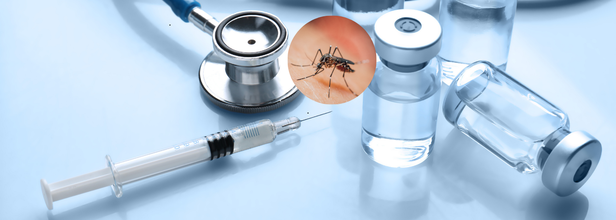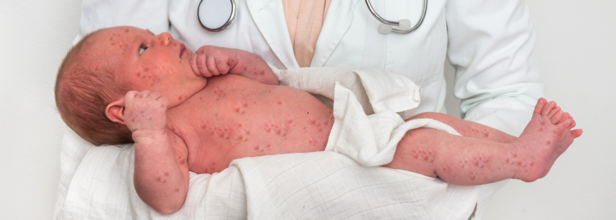- Health Conditions A-Z
- Health & Wellness
- Nutrition
- Fitness
- Health News
- Ayurveda
- Videos
- Medicine A-Z
- Parenting
- Web Stories
Mediterranean diet associated with 23 per cent reduction in mortality, study finds

Historically, there has always been a substantive body of work that suggests that the Mediterranean diet is good for the heart, however, recent research has come out that shows that it could even reduce your risk of death to a major degree.
Mortality Was Reduced By 23% In Those That Followed A Mediterranean Diet
Published in the JAMA Network Open, the study focused on more than 25,000 women over the age of 25 and found that the diet had reduced their risk of overall mortality by 23%. Quite significantly, the study also showed a reduction in fatality in those patients who had cardiovascular disease and tumours.
Following the traditions of the Mediterranean itself, the diet mainly consists of fruits, vegetables, fish, grains and cereals. As a general rule, people also make an effort to eat more red meat and drink less alcohol which has been known to have an effect on your dietary health.
The study collected basic health information between 1993 and 1996, which assessed 33 different categories like body weight, lifestyle and other factors. All participants were healthcare professionals, although their mean age was 54.6 years, and they had a health checkup every six months in the first year and then one year later. The data was mainly analyzed using health and mortality data from 2018 to 2023 to determine the causes of death and the total number of deaths.
Participants who followed a Mediterranean diet had a lower BMI and followed a healthy lifestyle that included fruits, vegetables and whole grains. Researchers have found that people who eat more vegetables and fish eat less red and processed meat. A high Mediterranean diet score is associated with a healthy metabolic profile.
Why Mediterranean Diets Are Considered Healthier
This isn't the first time studies have suggested dieting as a way to eat better. A study last year found that the diet helped reduce women's risk of heart disease by 24 per cent, analyzing 16 previous studies.
However it should be noted that this study has several limitations, such as the lack of racial and ethnic groups. The students are middle-aged or older, well-educated and speak predominantly Latin. The authors acknowledged that this may limit the generalizability of the study results. Dietary adherence was also assessed using dietary questionnaires that included group differences.
In spite of these limitations, the study contributes to the growing body of evidence that supports the health benefits of the Mediterranean diet. It also affirms the role that food could play to promote health and longevity. Therefore, we can recommend the Mediterranean diet as part of a healthy lifestyle to many people.
India’s First Dengue Vaccine Nears Final Trial Stage

Credits: Canva
In a significant stride toward curbing the spread of vector-borne diseases, India is moving closer to having its first indigenous dengue vaccine. The Indian Council of Medical Research (ICMR), in collaboration with Panacea Biotec, is on track to complete the enrollment of participants for Phase 3 clinical trials by October 2025, according to CNBC-TV18.
This crucial phase of testing, launched on August 14, 2024, marks the most advanced stage yet for the vaccine’s development. The multi-center, double-blind, randomised, placebo-controlled study is designed to assess the vaccine’s efficacy, safety, and long-term immunogenicity. So far, over 70% of the targeted 10,335 participants have been enrolled across 20 medical centers nationwide, according to CNBC-TV18 sources.
Two-Year Follow-Up Required Before Regulatory Submission
Once participant enrollment is completed, each subject will be monitored for a two-year follow-up period. This extended observation window, considered critical for evaluating the vaccine's long-term safety and effectiveness, is expected to conclude by the end of 2027.
According to CNBC-TV18, sources familiar with the development confirmed, “The enrollment process is progressing smoothly, and no safety concerns have been reported so far.”
Only after the follow-up period ends and the data are thoroughly analyzed will the findings be submitted to the Central Drugs Standard Control Organization (CDSCO) for regulatory review and potential market authorization. “If the vaccine demonstrates acceptable efficacy and a clean safety profile, it could then be considered for regulatory approval and subsequent launch,” CNBC-TV18 reported, quoting official sources.
ALSO READ: Dengue On The Rise: How Climate And Geography Are Shaping A Growing Threat
National-Scale Trial Across Premier Institutions
The Phase 3 trial is being carried out at reputed medical institutions located in major cities including Chennai, Pune, Hyderabad, Bengaluru, New Delhi, and Kolkata. According to CNBC-TV18, the study protocol stipulates a comprehensive two-year post-vaccination follow-up. The final data from this period will be crucial in determining the vaccine’s fate in the Indian market.
A Single-Dose Vaccine: What Is It All About?
What sets this vaccine apart from global counterparts is its single-dose formulation. This is expected to ease the logistical and financial challenges of mass immunization in dengue-endemic areas. Unlike international vaccines like Sanofi’s Dengvaxia and Takeda’s QDENGA—which require multiple doses and have limitations in efficacy across different dengue virus serotypes—India’s homegrown candidate offers a potentially more accessible and broadly applicable alternative.
Earlier phases of clinical evaluation, including Phase 1 and Phase 2 trials conducted in India, had already received regulatory clearance from CDSCO. These trials showed that the vaccine was both safe and capable of eliciting a strong immune response.
“India’s first dengue vaccine candidate has shown encouraging results so far. Phase 1 and 2 trials confirmed that the vaccine is safe and induces a protective immune response. We’re hopeful that Phase 3 will bring us closer to a much-needed tool in dengue prevention,” CNBC-TV18 reported, citing official sources.
YOU MAY LIKE: India’s First Indigenous Dengue Vaccine Coming Soon; What To Expect?
A Vital Step for a Country with High Dengue Burden
India continues to suffer from seasonal dengue outbreaks, with thousands of hospitalizations each year placing strain on public health infrastructure. The World Health Organization estimates about 390 million dengue infections occur globally each year, with India accounting for a significant portion. With no specific antiviral treatment available, prevention through vaccination and vector control remains the most effective strategy.
As per current projections, enrollment will wrap up by October 2025, followed by a two-year follow-up until the end of 2027. Only after this can ICMR and Panacea Biotec submit their formal application for market authorization, CNBC-TV18 noted.
If the vaccine passes regulatory scrutiny, it could revolutionize dengue control efforts not only in India but also in other low- and middle-income countries grappling with high disease burdens and limited access to effective vaccines.
Measles Outbreak Update: Kentucky Confirms Its First Case

Credits: Canva
The latest state to join the measles outbreak, which has been ongoing for quite some time now in the United States, is Kentucky. It has declared the outbreak, and has been confirmed by the US Centers for Disease Control and Prevention (CDC) on Wednesday. So far, there has been a total of 1,267 confirmed cases of measles this year, nationwide.
For now, five active measles cases have been detected in Kentucky, and four of these are linked to the same outbreak.
"When there are measles outbreaks in other states and nearby countries, it is not surprising to see spread to Kentucky," Steven Stack, M.D., secretary of the Kentucky Cabinet for Health and Family Services, said in a statement. "Measles can be very serious, but it is avoidable through vaccination. We urge all parents to have their children vaccinated to ensure they are protected from preventable diseases like measles."
How Many Outbreaks And How Many Cases?
The CDC defines an outbreak as at least three related cases, and so far in 2025, 27 such outbreaks have been reported. Of them, 88% of the confirmed cases, which means 1,115 cases out of 1,267, are linked with the ongoing outbreak. In 2024, a total of 285 measles cases were reported by 33 jurisdictions, resulting in 16 outbreaks.
Since the late winter of 2024 till spring of 2025, Texas witnessed the country's largest outbreak, and three additional cases were reported this week. The case count in Texas now totals 753 since late January.
Last week, the New Mexico Department of Health reported five measles cases at the Luna County Detention Center in Deming. Officials are currently determining the vaccination status of people being held at the facility.
"The cases at Luna County Detention Center are a stark reminder that the measles outbreak in New Mexico is not over," Chad Smelser, M.D., a medical epidemiologist with the New Mexico Department of Health, said in a statement. "We urge everyone in New Mexico, especially Luna County residents, to ensure that they are fully vaccinated against measles."
So far, from the measles cases in Texas, New Mexico and Oklahoma, three deaths have been reported. Among them, two were elementary school-aged children from the West Texas epicenter, and one was an adult in New Mexico. All of them were unvaccinated.
What Vaccine Must One Take To Prevent Measles?
The CDC recommends two doses of the MMR vaccine as the "best way to protect against measles, mumps, and rubella". For children, it recommends two doses of MMRV.
The MMR vaccine is a combination of measles, mumps, and rubella vaccines, while the MMRV is a combination of measles, mumps, rubella, and varicella (chickenpox) vaccines.
In the US, two MMR vaccines are available for use, including M-M-R II, and PRIORIX. For MMRV, the vaccine is only licensed for children who are 12 months through 12 years of age. The first dose is usually administered between the ages of 12 to 15 months, while the second dose is administered between the ages of 4 to 6.
For older children, adolescents and adults, the two doses of MMR vaccines should be separated by at least 28 days.
What Is Measles?
CDC notes that it is a highly contagious virus, which means if one person has it, up to 9 out of 10 people nearby will also become infected. As per the Mayo Clinic, measles is caused by the measles virus, which can spread through an infected person's cough, sneeze, or even during conversations.
Signs And Symptoms
Measles symptoms appear 7 to 14 days after contact with the virus. Common measles symptoms include:
- High fever (may spike to more than 104° F)
- Cough
- Runny nose (coryza)
- Red, watery eyes (conjunctivitis)
- Rash
Kylie Page’s Sudden Death Raises Questions About Drug Use, As Fentanyl And Drug Paraphernalia Found In Apartment

Credits: Instagram
Netflix and adult film star Kylie Page's sudden death just at the age of 28 has come has a shock for the entertainment industry and her family. She was found dead at her apartment on June 25 after a friend called the cops when the friend was unable to reach her.
By the time the fire department arrived at her Hollywood residence, she had already been pronounced dead.
Kylie Page Death Reason
According to US Weekly's report the evidence suspect a drug overdose case as the police confirmed for finding fentanyl and drug paraphernalia. According to publicly available records from the Los Angeles County Medical Examiner, her cause of death is currently listed as “deferred,” indicating further investigation is underway, possibly involving suspected foul play. Her death was confirmed by the Canadian adult entertainment company she worked for."The Brazzers team is deeply saddened to learn of Kylie Page’s passing,” the company said in a statement on X. “Kylie will be remembered for her laughter, kindness, and bringing light wherever she went. We extend our heartfelt condolences to Kylie’s family, friends, and fans during this difficult time.”
Fentanyl & Paraphernalia overdose: How These Drugs Impact Your Body?
Page's death has again reminded people of drug use and abuse in the entertainment industry cases like Matthew Perry's death and Liam Payne's death.In case of Page, fentanyl and drug paraphernalia was found in her home.
As per the Edge Treatment Center that is licensed by the California State Department of Health Care Services, and US federal law, drug paraphernalia is any device, item, or component of any type which is mainly meant or crafted for the purpose of production, compounding, transforming, obscuring, generating, processing, prepping, injecting, inhaling, consuming, or otherwise including a banned drug into our bodies.
Common Drugs Linked with Paraphernalia
- Marijuana/cannabis
- Cocaine
- Heroin and other opioids
- Methamphetamines
- Ecstasy
- Inhalants
What Is Fentanyl and Why Is It So Dangerous?
As per the United States Drug Enforcement Administration (DEA), fentanyl is a potent synthetic opioid drug approved by the Food and Drug Administration for use as an analgesic (pain relief) and anesthetic. It is approximately 100 times more potent than morphine and 50 times more potent than heroin as an analgesic.
It is also known as Apace, China Girl, China Town, Dance Fever, and by other various names. It can be consumed through snorting, sniffing, smoking, or orally by pill or tablet. It could also be spiked onto blotter paper, patches or sold alone or in combination with heroin and other substances.
How Fentanyl Affects the Body and Mind
As per the National Institute on Drug Abuse, US, Fentanyl and other illegally produced synthetic opioids have played a major role in the overdose crisis in the United States since 2013.
Since about 2017, overdose deaths often involve use of multiple drugs. In many cases, fentanyl is one of these drugs. When fentanyl is mixed with other drugs, either on purpose or unknowingly, the combination can have more serious health effects.
Like other opioid pain relievers, fentanyl can cause a range of effects including relaxation, euphoria, pain relief, sedation, confusion, drowsiness, dizziness, nausea, vomiting, urinary retention, constricted pupils, and slowed breathing.
In cases of overdose, symptoms may include stupor, altered pupil size, cold and clammy skin, bluish discoloration (cyanosis), coma, and respiratory failure, which can be fatal. A combination of coma, pinpoint pupils, and respiratory depression is a strong indicator of opioid intoxication.
© 2024 Bennett, Coleman & Company Limited

